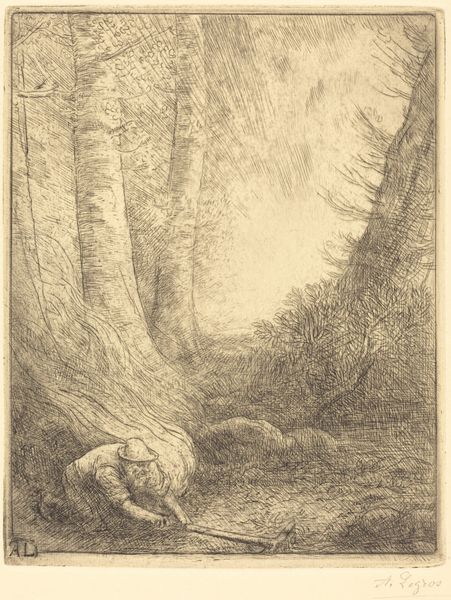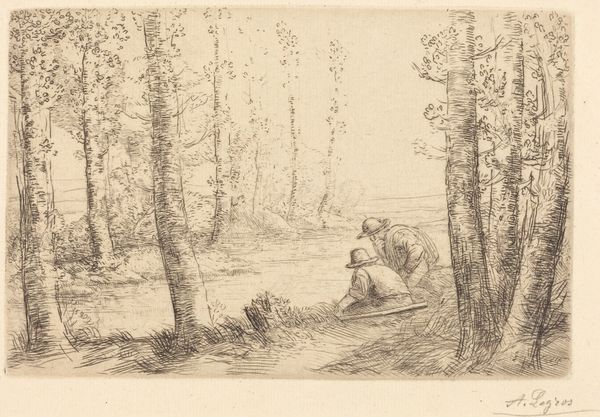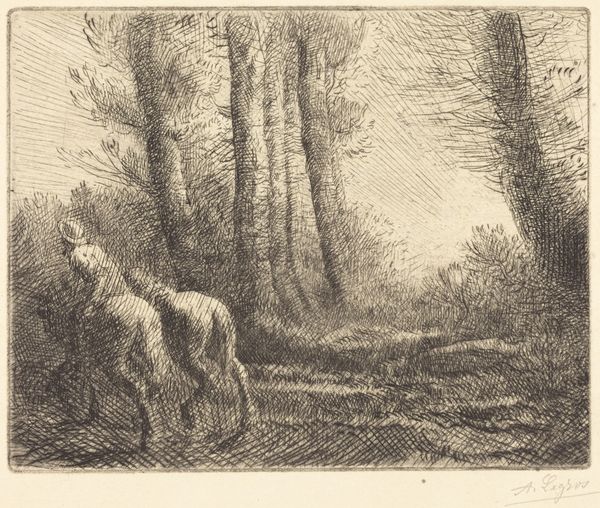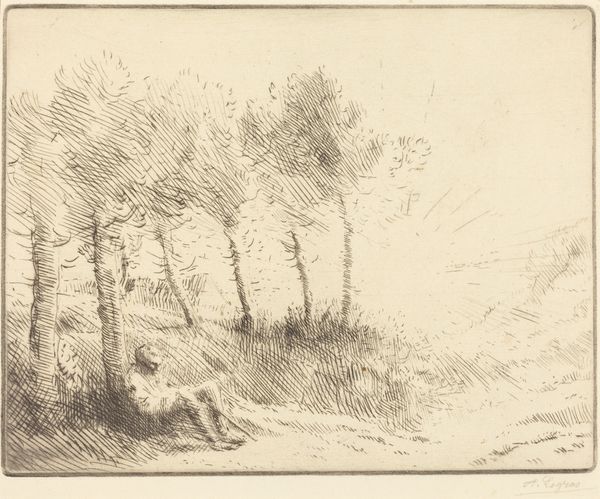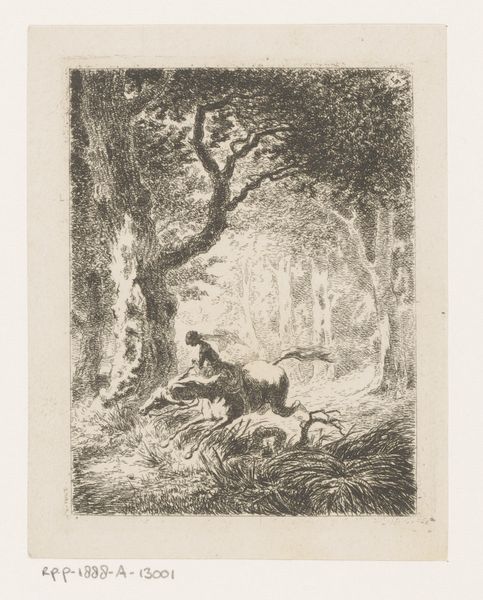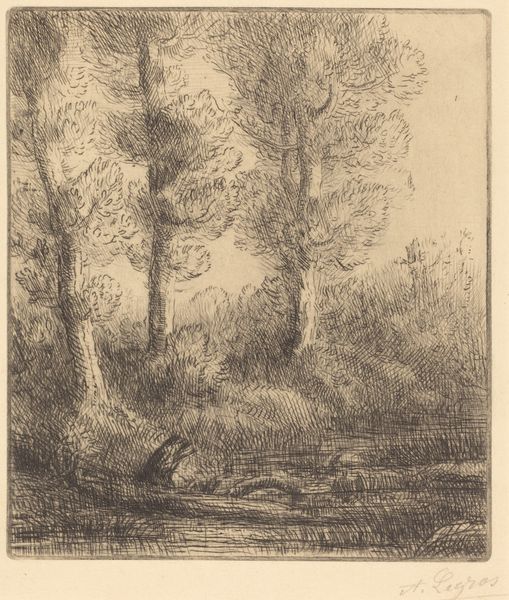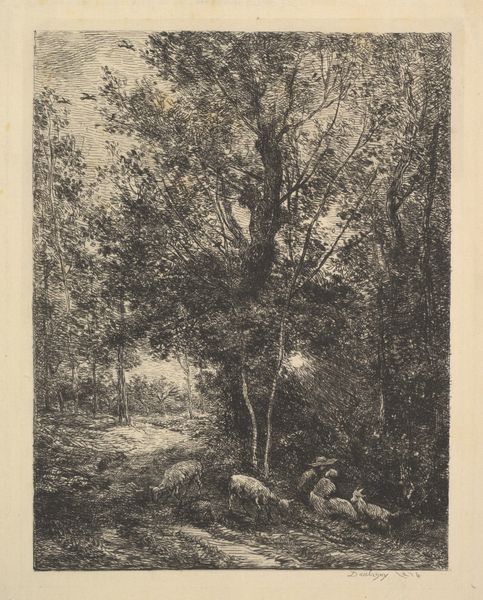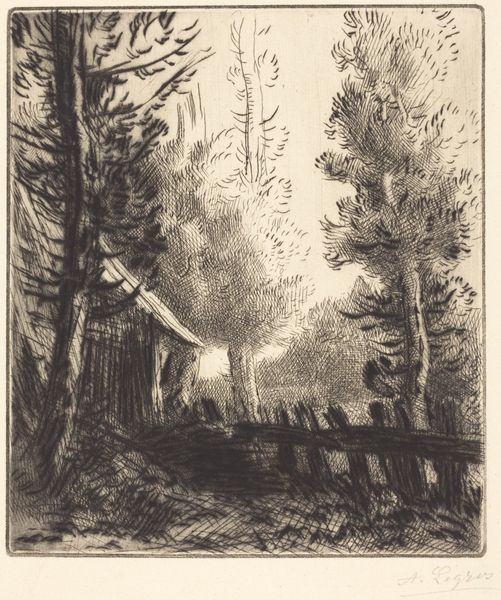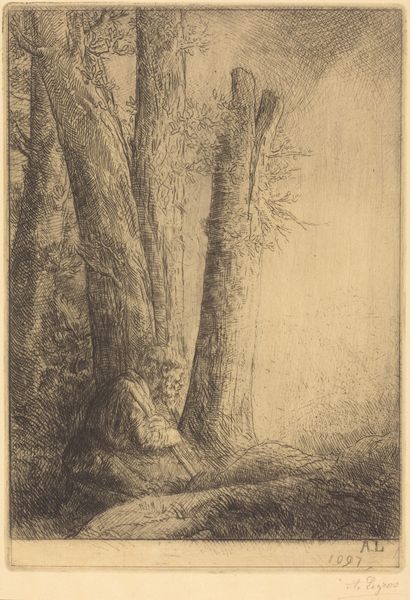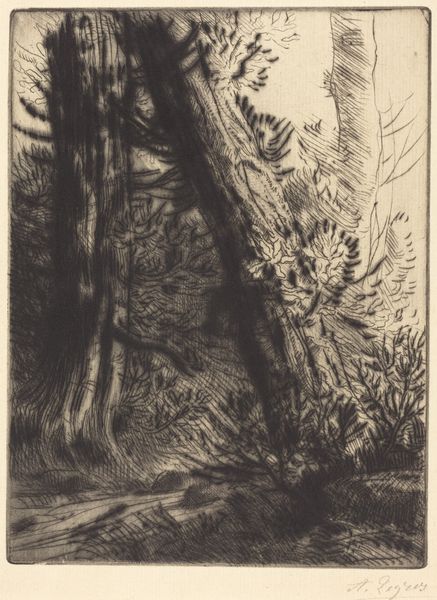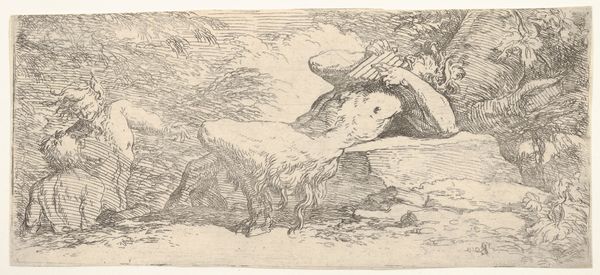
drawing, print, etching, pencil, graphite
#
drawing
# print
#
etching
#
pencil sketch
#
landscape
#
pencil
#
graphite
#
realism
#
monochrome
Copyright: National Gallery of Art: CC0 1.0
Curator: Ah, this small etching, titled "Farmer and His Donkey," captures a simple, rustic scene, attributed to Alphonse Legros. There is a profound feeling of nature's stillness communicated through subtle lines. What do you make of it? Editor: It feels very intimate and quiet. There's almost a melancholic atmosphere created by the monochromatic palette. The composition is quite interesting too, it pulls me right into the woods alongside this duo. Curator: Absolutely, and that intimate quality is very characteristic of Legros' approach to realism. What's fascinating is his rendering of the archetypal working class figures amidst the late industrial revolution, an important subject. This specific rendering is very raw, though. The way he utilizes etching brings the emotional narrative into greater relief. The donkey, as a loaded symbol in Western culture, cannot be missed. Editor: The social context definitely adds another layer to this image. I mean, donkeys are such working animals. It highlights labor and class structure so quietly and effectively. But beyond the class dimension, I see it also as a powerful symbol of persistence, labor and strength in pastoral life, wouldn't you say? The visual symbol is incredibly evocative, even down to the humble stance, its burdened nature. Curator: Exactly, burdened but also resilient, deeply connected to the land, representing the cyclical rhythm of agricultural life, right? There's an enduring quality, the peasant and his beast in this landscape which is so persistent across time. Consider that through art we are looking back on that imagery, which is a signifier in the culture. This allows the original relationship between farmers, working class folks, nature and animals to persist symbolically to our contemporary world. It invites critical examination of how agriculture has evolved, in contrast to labor through machines. Editor: It’s striking how a seemingly simple etching manages to speak to so much— class, pastoral symbolism, and industrial commentary. This makes me think a lot about artistic representation, it feels rich with multiple significations, cultural memories. What a brilliant exploration! Curator: It’s truly amazing how many interpretations are evoked by the simplest scenes, especially as revealed by our own personal and intellectual investments!
Comments
No comments
Be the first to comment and join the conversation on the ultimate creative platform.
